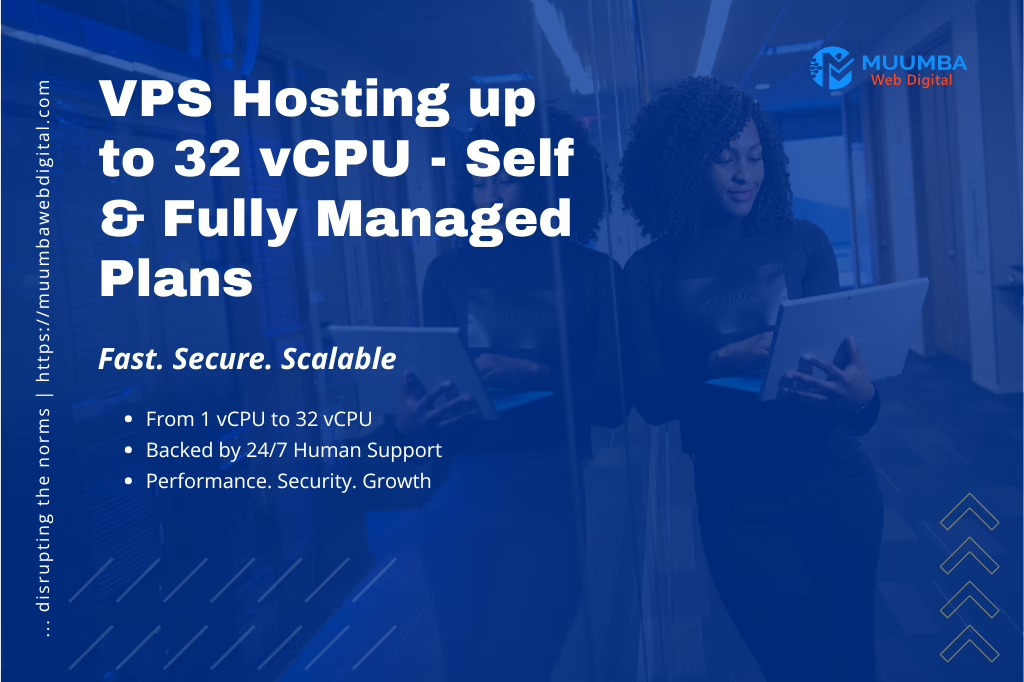
WordPress Performance Lab, Core Web Vitals, and the Bright Future with WordPress 6.9
Performance, Security, and Scalability for Every WordPress User
The new Performance Lab plugin is transforming how WordPress websites measure up against Google’s Core Web Vitals. By combining innovative performance tools with the upcoming WordPress 6.9 release, site owners gain faster load times, smoother user experiences, and stronger technical foundations. At Muumba Web Digital, we’re excited to bring these advancements directly to our clients through our Managed WordPress Hosting migration.
Why Core Web Vitals Matter
Google’s Core Web Vitals (CWV) are a set of metrics that measure how your site feels to visitors – how fast content appears, how responsive it is, and how stable it remains as everything loads. The key metrics are:
- Largest Contentful Paint (LCP): how long until the largest visible content element loads (e.g. a hero image or big block of text or media).
- Interaction to Next Paint (INP): how quickly the page responds to user interaction (click/tap etc.).
- Cumulative Layout Shift (CLS): how much the layout jumps around during load (images or embeds resizing, content shifting etc.).
Google uses these metrics not just because they’re technically measurable, but because they strongly correlate with user satisfaction: bounce rates, conversions, and search performance. Fast, stable, responsive sites make users trust and stay with your brand.
At Muumba Web Digital, ensuring our clients’ websites deliver on these points is central to what we do. That’s why we’ve invested in top-tier managed WordPress hosting (migration completing in September 2025), and now we’re embracing the WordPress Performance Lab plugin. Together, these efforts are all about giving you a platform that’s fast, secure, scalable, and ready for whatever the future of the web brings.
What Is the WordPress Performance Lab Plugin?
The Performance Lab plugin is an official initiative from the WordPress Core/Performance team to bring together performance-focused feature experiments that may later become part of WordPress Core. It’s modular, which means you can enable or disable individual features as needed.
Some of its capabilities:
- Modern image formats (WebP, AVIF)
- Image placeholders + prioritization of “above the fold” content
- Better responsive image handling (serving correct sizes per device)
- Embed optimization to prevent layout shifts
- Speculative preloading / resource hints
- Performance improvements in translations, scripts, and navigation (including back/forward cache support)
These features directly help with LCP, INP, and CLS (i.e. the Core Web Vitals), by making your pages load faster, respond more quickly, and feel more stable as they render.
Benchmarks: What the Data Shows
Here are real measurements and what people are seeing when using Performance Lab + related optimizations:
Image Prioritizer in gallery pages
- Context/Scenario: Mobile device, large featured image mis-prioritized
- Before/After Baseline Improvements: ~ 0.98s LCP / ~ 0.71s
- Approximate Gain: ~ 27.5% faster LCP 1
Same scenario on desktop
- Context/Scenario: Desktop site
- Before/After Baseline Improvements: ~ 1.02s LCP / ~ 0.50s
- Approximate Gain: ~ 50-55% improvement 1
Background image as LCP
- Context/Scenario: Mobile viewports
- Before/After Baseline Improvements: ~ 1.04s / ~ 0.58s
- Approximate Gain: ~ 44% improvement 1
Modern image formats (WebP/AVIF)
- Context/Scenario: Featured image LCP element
- Before/After Baseline Improvements: ~ 0.61s / ~ 0.60s
- Approximate Gain: small but consistent (~2-5%) gain 1
Back/Forward Cache (bfcache) navigation
- Context/Scenario: Returning via browser back button
- Before/After Baseline Improvements: ~ 1.40s / ~ 0.02s
- Approximate Gain: Essentially instant on repeated navigation in tested scenarios 1
Sources:
And what you can reasonably expect with a typical site (shared or mid-tier WordPress hosting) when combining Performance Lab + good theme + hosting + moderate plugin usage:
- LCP dropping from 3–4s → ~2.0-2.8s on mobile
- CLS dropping into the “good” range (< 0.1) if layout-shift sources are mostly images/embeds
- INP / responsiveness improved by 30-60%, making UI feel snappier
Connecting to WordPress 6.9: What’s Coming & Why It Matters
WordPress powers over 43% of websites globally, and more than 60% of sites using a content management system (CMS). It has become a foundation. Every major release helps push the platform forward. WordPress 6.9, expected December 2, 2025, according to the official Roadmap to 6.9, is no exception.
Here are some of the key features & improvements expected in 6.9 that align very well with Performance Lab, and together make WordPress even stronger for performance:
- Simplified Site Editing Mode: Allows users to switch between a content-first mode and design mode. Less UI clutter means faster editing, fewer distractions, and in many cases lighter loads, especially for content creators.
- Improved Template Management: Ability to draft templates, activate/deactivate them, support multiple templates per slug, preserve custom templates during theme switching. Better workflows, more efficient theme operations.
- Block-Level Commenting: Collaboration at the block level means editors, clients, content teams can leave precise feedback in context. Less need for external tools, fewer back-and-forth iterations. This contributes indirectly to speed because content revisions are more efficient.
- Expanded Command Palette: Faster navigation, more keyboard driven workflows, less clicking around. Small efficiency improvements across many parts of WordPress add up.
- Developer APIs (Abilities API, Interactivity API, smarter resource handling): Better APIs mean themes/plugins can be built in a more modern, efficient way. Combined with Performance Lab’s experiments (e.g. resource hints, lazy / conditional loading), this helps reduce unnecessary scripts, CSS, and makes front-end and backend more responsive.
- Performance Improvements & Smarter Page/Asset Loading: Faster page transitions, optimized asset loading, resource handling, etc. These dovetail perfectly with what Performance Lab does.
Also, the growth of the WordPress Block Editor (Gutenberg) and Block-based themes is key to this picture:
- Block editor tends to load only what is needed (blocks, styles, scripts), avoiding bloat common with heavy page builder setups.
- As block themes mature (Full Site Editing, template parts, global styles), fewer extra heavy plugins or overrides are required.
- Better asset management, lighter front-end code, and more efficient editing/back-end experiences result.
The Future of the Web, Powered by WordPress & Muumba Web Digital
Putting it all together, here’s how the pieces reinforce each other:
- Performance Lab brings incremental (but measurable) improvements now.
- WordPress 6.9 is adding more tools, API / editing features, and performance-oriented enhancements that elevate the foundation.
- Block Editor + Block Themes are growing, reducing weight, improving flexibility, allowing for leaner sites.
For you, that means a growing platform that is more secure, faster, more capable, and one that is fully committed to continuous improvement. You don’t need to worry about obsolescence or getting left behind.
At Muumba Web Digital, our developers and hosting team are working in tandem so that you don’t have to worry. We stay on top of WordPress Core, Performance Lab, and hosting innovations so your sites perform optimally out of the box.
Offsetting the Limitations
Even with all this progress, there are things to watch out for to ensure you get the full benefit:
- Hosting / server performance still matters a lot. No plugin can fully compensate for slow server response (high TTFB), limited memory, or outdated PHP versions.
- Third-party scripts and widgets (ads, tracking, external embeds) can slow things down or introduce layout shifts. Use them sparingly, load them conditionally.
- Optimizing images / media remains core: compressed properly, modern formats, correct sizes, lazy loading, etc.
- Theme and plugin quality: bloated themes or inefficient plugins can negate gains. Test performance, keep minimal overhead.
- Testing / staging & monitoring actual user metrics: Field data (real user monitoring, search console, tools like CrUX) lags but reflects real experience. Lab tools help, but field metrics matter more.
Why This Matters at Muumba Web Digital
- We’re completing in September 2025) migration to a more powerful Managed WordPress Hosting platform. Faster speeds, better security, more scalability so you get the infrastructure you need.
- We are actively experimenting with Performance Lab across client sites and gathering real-site data to report in future posts.
- We stay tuned to WordPress releases (including 6.9), block editor developments, theme improvements, PHP upgrades, etc., so your site benefits without extra effort.
Call to Action: Choose Muumba Web Digital’s Managed WordPress Hosting
We invite you to partner with Muumba Web Digital for WordPress performance that doesn’t just meet standards. It pushes them. Our Managed WordPress Hosting includes:
- Automatic setup, backups, and updates, with a 99.9% uptime guarantee
- Unmetered bandwidth & free SSL certificate.
- WordPress pre-installed + WooCommerce ready
- Daily + on-demand backups & 1-click restore
- Web Application Firewall + daily malware scans
- Unlimited malware removal & DDoS protection
- Up to 2× faster performance with global Cloudflare CDN**
- Enhanced security, staging site, code optimizer, smart plugin manager
- Sell online easily with WooCommerce
- Built-in speed & performance enhancements so you don’t have to fiddle with every detail
- 24/7 technical support
- 30-day money back guarantee
- 24/7 malware scan & removal
We display your creativity to the world on Muumba Web Digital’s Managed Hosting for WordPress.
Contact us to get started and let us worry about performance so you can focus on your brand.
Join Our Email List!
Stay ahead of the curve! Subscribe to our newsletter for exclusive deals, expert digital marketing insights, and the latest technology trends and updates.
Hal Ngoy
Founder & CEO of Muumba Web Digital Entrepreneur. Kingdom Builder. Transformational Mentor. My passion is to inspire radical, inside-out transformation that awakens people to their divine potential and destiny. As Founder & CEO of Muumba Web Digital, I lead a creative branding and digital marketing agency dedicated to helping brands grow through strategic design, marketing, and web development. Rooted in Kingdom entrepreneurship, my work is built on excellence through transformation, not just for profit, but to build a legacy and advance societal renewal.
All Posts



